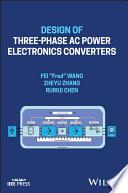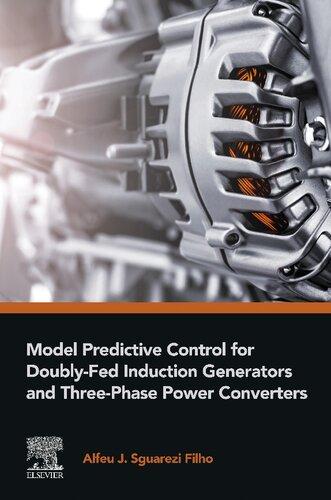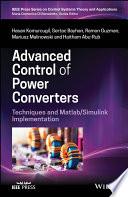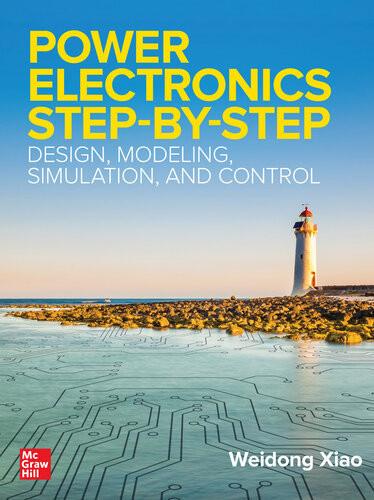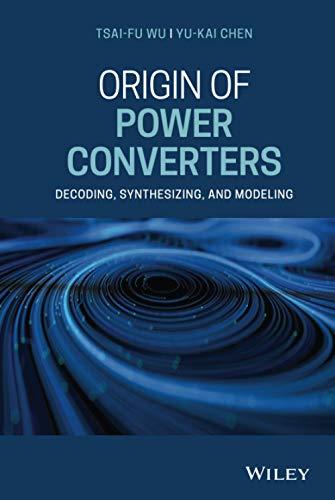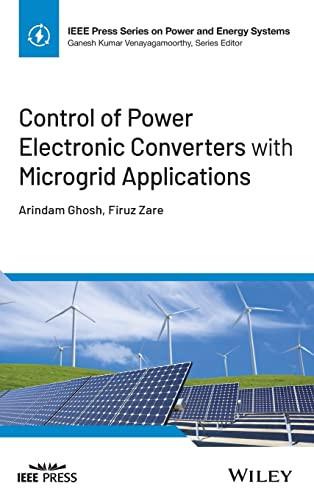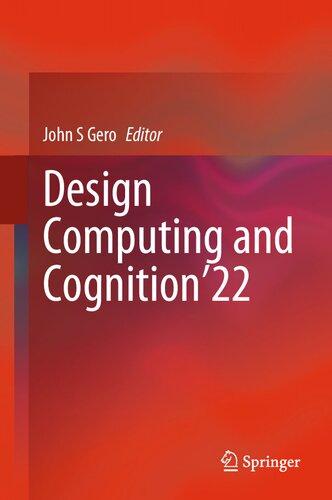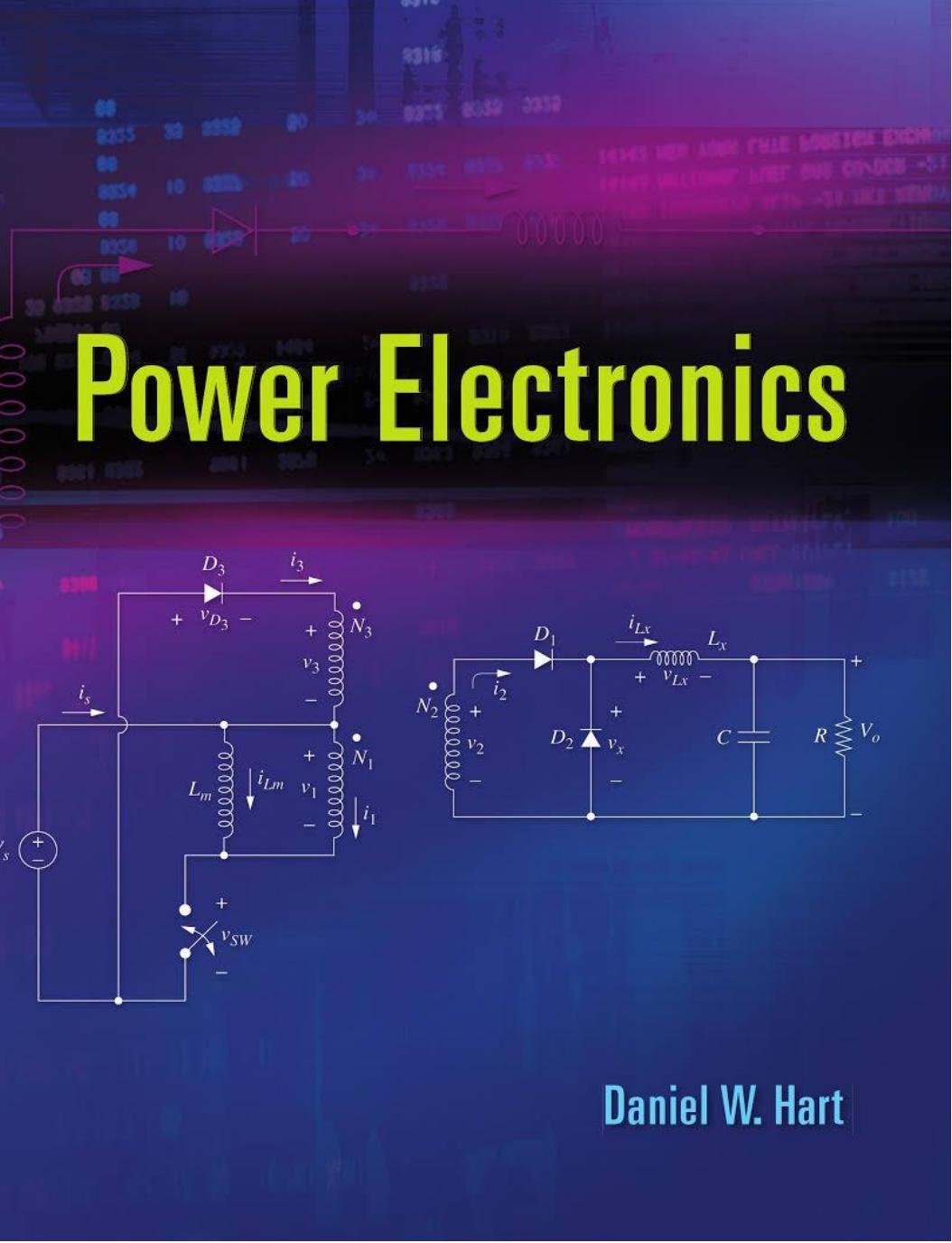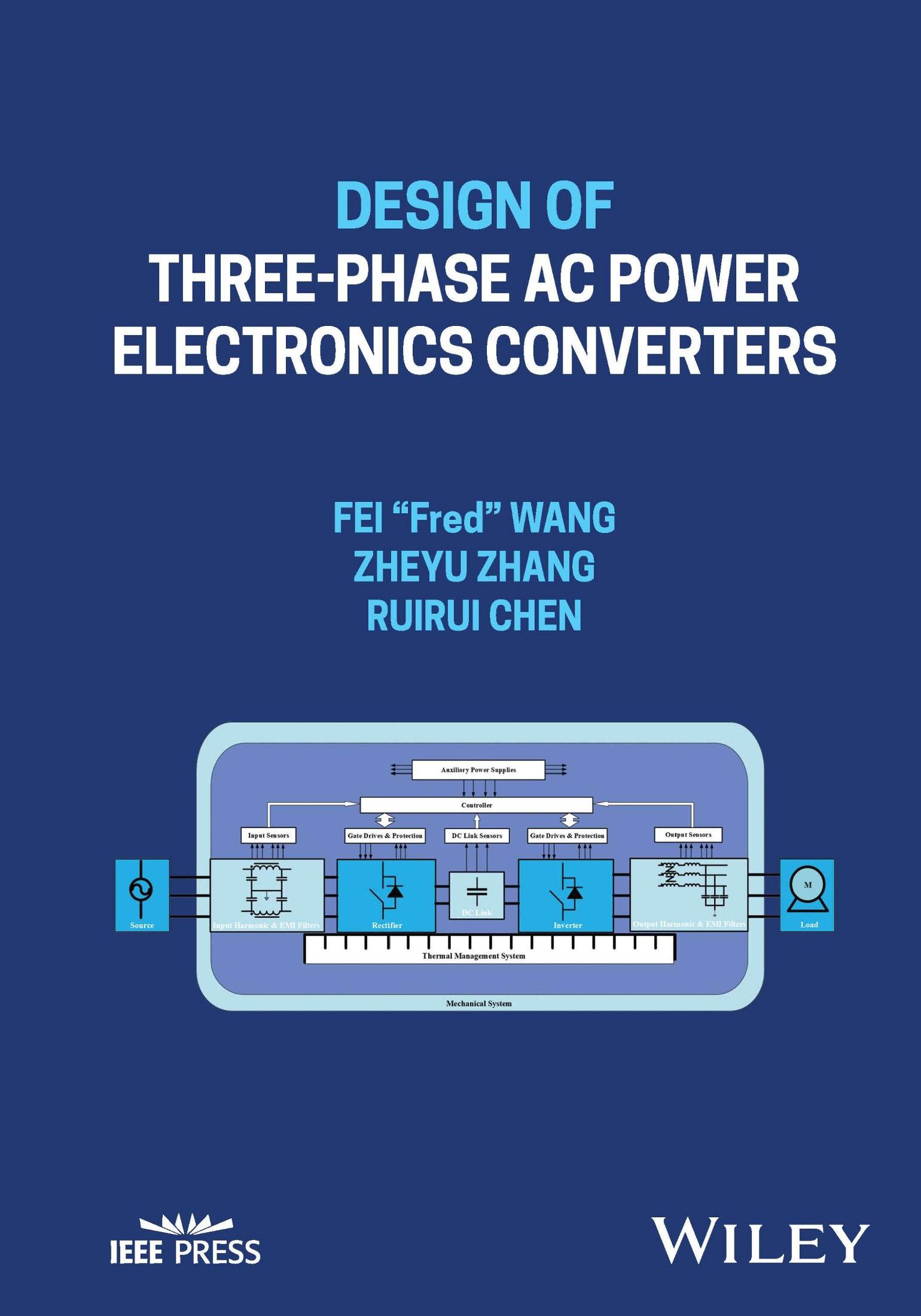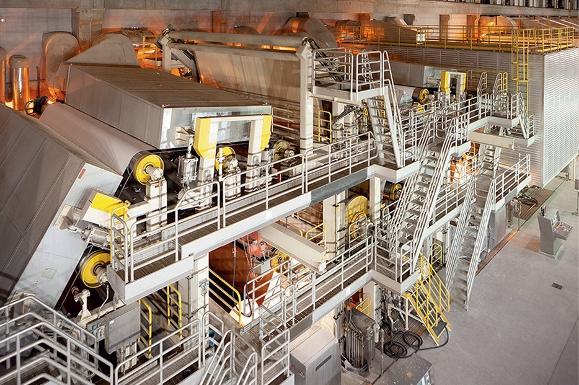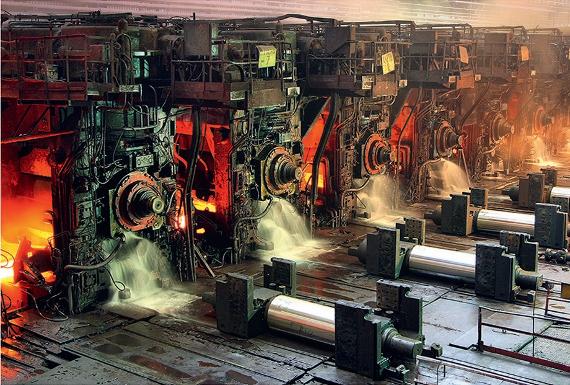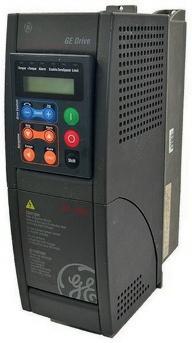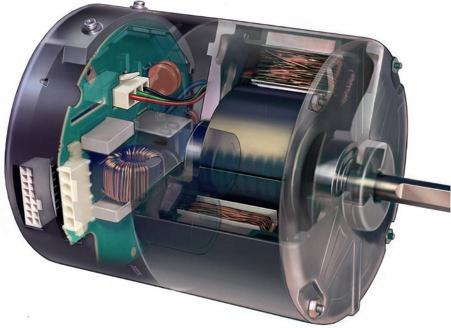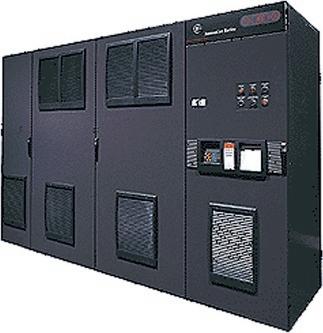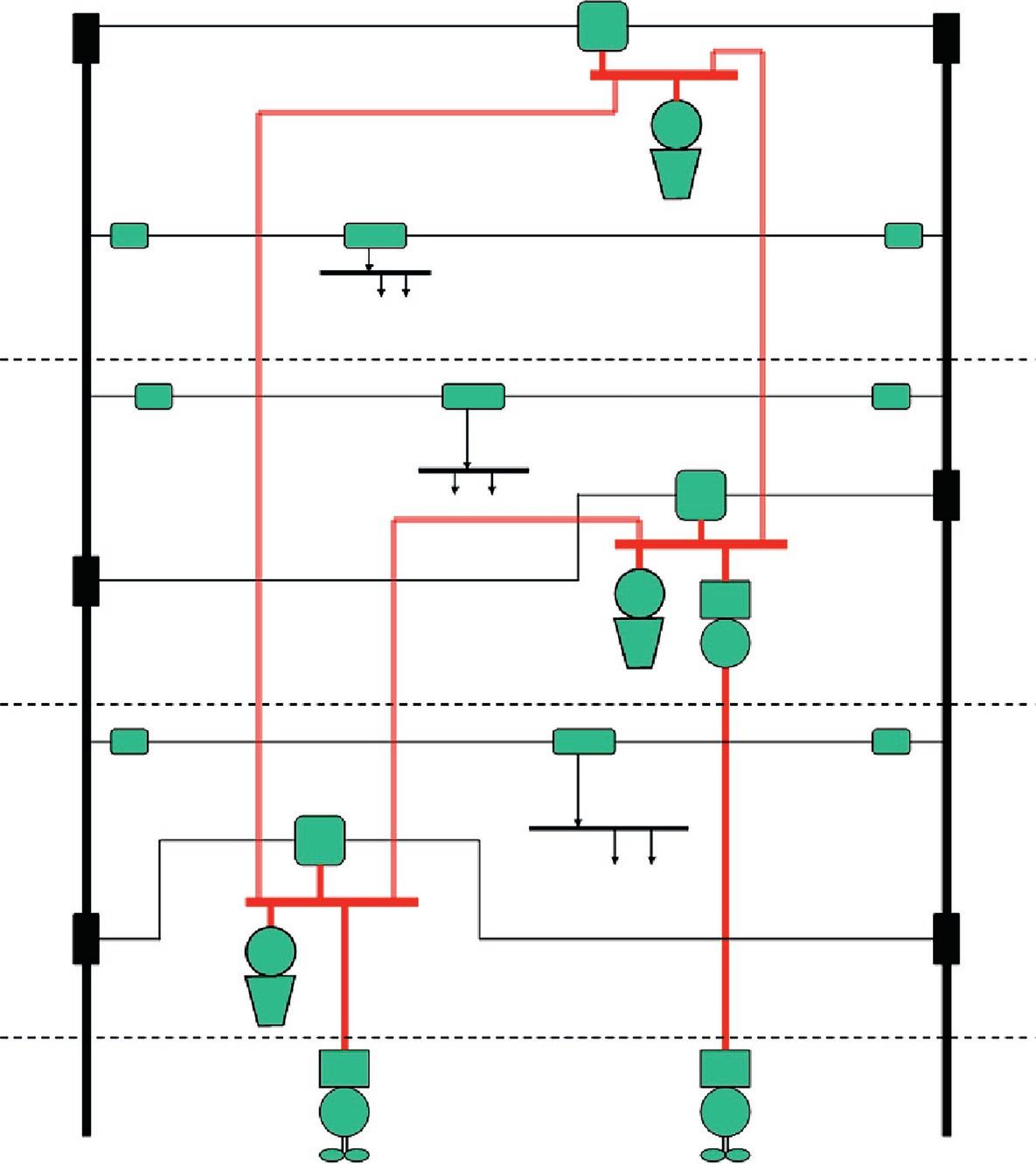DesignofThree-PhaseACPower ElectronicsConverters
Fei “Fred” Wang
UniversityofTennessee,Knoxville,TN,USA
ZheyuZhang
RensselaerPolytechnicInstitute,Troy,NY,USA
RuiruiChen
UniversityofTennessee,Knoxville,TN,USA
Copyright©2024byTheInstituteofElectricalandElectronicsEngineers,Inc.Allrightsreserved.
PublishedbyJohnWiley&Sons,Inc.,Hoboken,NewJersey. PublishedsimultaneouslyinCanada.
Nopartofthispublicationmaybereproduced,storedinaretrievalsystem,ortransmittedinanyformorbyanymeans, electronic,mechanical,photocopying,recording,scanning,orotherwise,exceptaspermittedunderSection107or108 ofthe1976UnitedStatesCopyrightAct,withouteitherthepriorwrittenpermissionofthePublisher,orauthorization throughpaymentoftheappropriateper-copyfeetotheCopyrightClearanceCenter,Inc.,222RosewoodDrive, Danvers,MA01923,(978)750-8400,fax(978)750-4470,oronthewebatwww.copyright.com.Requeststothe PublisherforpermissionshouldbeaddressedtothePermissionsDepartment,JohnWiley&Sons,Inc.,111River Street,Hoboken,NJ07030,(201)748-6011,fax(201)748-6008,oronlineathttp://www.wiley.com/go/permission.
Trademarks:WileyandtheWileylogoaretrademarksorregisteredtrademarksofJohnWiley&Sons,Inc.and/orits affiliatesintheUnitedStatesandothercountriesandmaynotbeusedwithoutwrittenpermission.Allother trademarksarethepropertyoftheirrespectiveowners.JohnWiley&Sons,Inc.isnotassociatedwithanyproductor vendormentionedinthisbook.
LimitofLiability/DisclaimerofWarranty:Whilethepublisherandauthorhaveusedtheirbesteffortsinpreparing thisbook,theymakenorepresentationsorwarrantieswithrespecttotheaccuracyorcompletenessofthecontentsof thisbookandspecificallydisclaimanyimpliedwarrantiesofmerchantabilityorfitnessforaparticularpurpose. Nowarrantymaybecreatedorextendedbysalesrepresentativesorwrittensalesmaterials.Theadviceandstrategies containedhereinmaynotbesuitableforyoursituation.Youshouldconsultwithaprofessionalwhereappropriate. Further,readersshouldbeawarethatwebsiteslistedinthisworkmayhavechangedordisappearedbetweenwhenthis workwaswrittenandwhenitisread.Neitherthepublishernorauthorsshallbeliableforanylossofprofitoranyother commercialdamages,includingbutnotlimitedtospecial,incidental,consequential,orotherdamages.
Forgeneralinformationonourotherproductsandservicesorfortechnicalsupport,pleasecontactourCustomer CareDepartmentwithintheUnitedStatesat(800)762-2974,outsidetheUnitedStatesat(317)572-3993or fax(317)572-4002.
Wileyalsopublishesitsbooksinavarietyofelectronicformats.Somecontentthatappearsinprintmaynotbe availableinelectronicformats.FormoreinformationaboutWileyproducts,visitourwebsiteatwww.wiley.com.
LibraryofCongressCataloging-in-PublicationDataappliedfor
[ISBN:9781119794233,ePDF:9781119794240,epub:9781119794257,oBook:9781119794264]
CoverImage:Wiley
CoverDesign:CourtesyofFeiWang,ZheyuZhang,RuiruiChen
Setin9.5/12.5ptSTIXTwoTextbyStraive,Pondicherry,India
Contents
AbouttheAuthors xiii
Preface xv
Acknowledgments xvii
1Introduction 1
1.1BasicsofThree-PhaseACConverters 1
1.1.1BasicApplications 2
1.1.2BasicTopologies 10
1.1.3CompositionofThree-PhaseACConverters 16
1.2BasicsofThree-PhaseACConverterDesign 20
1.2.1EssenceoftheDesignandDesignTasks 20
1.2.2DesignProcedure,Strategy,andPhilosophy 23
1.3GoalandOrganizationofThisBook 26 References 29
PartIComponents 31
2PowerSemiconductorDevices 33
2.1Introduction 33
2.2StaticCharacteristics 35
2.2.1OutputCharacteristics 35
2.2.2On-stateCharacteristics 38
2.2.3TransferCharacteristicsofActivePowerSwitch 41
2.2.4LeakageCurrentandBreakdownVoltage 43
2.2.5JunctionCapacitance 46
2.2.6GateCharge 49
2.3SwitchingCharacteristics 50
2.3.1Model 50
2.3.2Method 54
2.4ThermalCharacteristics 57
2.4.1Model 58
2.4.2Method 58
2.5OtherAttributes 60
2.5.1SOA 60
2.5.2ReliabilityCharacteristics 60
2.5.3MechanicalCharacteristics 63
2.5.4NonstandardCharacteristics 66
2.6Scalability(Parallel/Series) 68
2.7RelevancetoConverterDesign 70
2.8Summary 72 References 73
3Capacitors 75
3.1Introduction 75
3.2CapacitorTypesandTechnologies 75
3.2.1CeramicCapacitors 76
3.2.2Paper 76
3.2.3Mica 76
3.2.4Poly-Film 77
3.2.5AluminumElectrolyticCapacitors(AECs) 77
3.2.6TantalumElectrolyticCapacitors(TECs) 78
3.2.7CapacitorTechnologiesComparison 78
3.2.8EmergingCapacitorTechnologies 78
3.3CapacitorSelectioninaConverterDesign 82
3.4CapacitorCharacteristicsandModels 84
3.4.1CapacitorEquivalentCircuitModelandCapacitance 84
3.4.2VoltageandCurrentCapabilityModels 88
3.4.3LossandThermalModels 93
3.4.4LifetimeModel 96
3.5CapacitorBank(Parallel/Series) 98
3.5.1CapacitorBankConfigurationandVoltageBalancing 98
3.5.2CapacitorBankLayoutforParasiticInductanceReduction 99
3.6RelevancetoConverterDesign 100
3.6.1CapacitorScaling 101
3.6.2ACCapacitorClassification 101
3.7Summary 102 References 102
4Magnetics 105
4.1Introduction 105
4.2MagneticCoreMaterialsandConstruction 105
4.2.1SoftMagneticAlloy-BasedLaminated,TapeWoundandCutCores 105
4.2.2PowderCores 107
4.2.3FerriteCores 108
4.3InductorDesigninaConverter 108
4.4InductorCharacteristicsandModels 110
4.4.1InductanceandPermeability 110
4.4.2FluxDensityandCoreSaturation 113
4.4.3FillFactor 113
4.4.4CurrentDensityandCoreWindowAreaProduct Ap 113
4.4.5CoreLoss 114
4.4.6WindingLoss 120
4.4.7TemperatureRise 121
4.4.8LeakageInductance 123
4.4.9FringingEffectofGappedCores 124
4.5RelevancetoConverterDesign 127
4.5.1CapacitorWindingCapacitance 127
4.6Summary 128 References 129
PartIISubsystemsDesign 131
5PassiveRectifiers 133
5.1Introduction 133
5.2PassiveRectifierDesignProblemFormulation 135
5.2.1PassiveRectifierDesignVariables 136
5.2.2PassiveRectifierDesignConstraints 136
5.2.3PassiveRectifierDesignConditions 138
5.2.4PassiveRectifierDesignObjectivesandDesignProblemFormulation 139
5.3PassiveRectifierModels 140
5.3.1ACInputHarmonicCurrent 141
5.3.2MinimumandMaximumDCVoltagesUnderNormalOperatingConditions 148
5.3.3Ride-ThroughorHoldupTimeWithoutInputPower 149
5.3.4DC-LinkStability 149
5.3.5Device-RelatedConstraints – Inrush 149
5.3.6Inductor-RelatedConstraintsandDesign 154
5.3.7Capacitor-RelatedConstraintsandSelection 157
5.4PassiveRectifierDesignOptimization 157
5.5InterfacetoOtherSubsystemDesigns 161
5.5.1GeneralClassifications 161
5.5.2Discussion 162
5.6Summary 164 References 165
6Load-sideInverters 167
6.1Introduction 167
6.2Load-sideInverterDesignProblemFormulation 167
6.2.1Load-sideInverterDesignVariables 168
6.2.2Load-sideInverterDesignConstraints 169
6.2.3Load-sideInverterDesignConditions 170
6.2.4Load-sideInverterDesignObjectivesandDesignProblemFormulation 172
6.3Load-sideInverterModels 173
6.3.1ACLoadHarmonicCurrent 174
6.3.2InverterPowerLoss 188
6.3.3ControlPerformance 198
6.3.4DeviceMaximumJunctionTemperature – MaximumThermalImpedance Requirement 200
6.3.5DeviceSwitchingOvervoltage 204
6.3.6DecouplingCapacitor 218
6.3.7DecouplingInductor 222
6.4Load-sideInverterDesignOptimization 230
6.5Load-sideInverterInterfacestoOtherSubsystemDesigns 236
6.5.1GeneralClassifications 236
6.5.2Discussion 238
6.6Summary 241 References 241
7ActiveRectifiersandSource-sideInverters 245
7.1Introduction 245
7.2ActiveRectifierandSource-sideInverterDesignProblemFormulation 245
7.2.1ActiveRectifierandSource-sideInverterDesignVariables 246
7.2.2ActiveRectifierorSource-sideInverterDesignConstraints 247
7.2.3ActiveRectifierandLoad-sideInverterDesignConditions 248
7.2.4ActiveRectifierandSource-sideInverterDesignObjectivesandDesignProblem Formulation 249
7.3ActiveRectifierandSource-sideInverterModels 251
7.3.1ACSourceHarmonicCurrent 252
7.3.2ControlPerformance 264
7.3.3DC-LinkStability 266
7.3.4Reliability 267
7.4ActiveRectifierandSource-sideInverterDesignOptimization 280
7.5ImpactofTopology 280
7.5.1CircuitModelingforDifferentTopologies 280
7.5.2TopologyImpactonDeviceModels 286
7.6ActiveRectifierandSource-sideInverterInterfacestoOtherSubsystemDesigns 300
7.7Summary 300 References 302
8EMIFilters 305
8.1Introduction 305
8.2EMIFilterDesignBasics 306
8.2.1EMI/EMCStandards 306
8.2.2DefinitionofCMandDMNoise 306
8.2.3EMINoiseMeasurement 312
8.2.4BasicEMIFilterDesignMethod 316
8.2.5EMIFilterTopology 322
8.3EMIFilterDesignProblemFormulation 324
8.3.1EMIFilterDesignVariables 324
8.3.2EMIFilterDesignConstraints 325
8.3.3EMIFilterDesignConditions 325
8.3.4EMIFilterDesignObjectivesandDesignProblemFormulation 326
8.4EMIFilterModels 326
8.4.1EMINoiseSourceModel 327
8.4.2EMIPropagationPathImpedanceModel 332
8.4.3EMIFilterCornerFrequencyvs.SwitchingFrequency 342
8.5EMIFilterDesignOptimizationandSomePracticalConsiderations 343
8.5.1GroundingEffect 344
8.5.2EMIFilterCoupling 346
8.5.3Mixed-ModeNoise 350
8.5.4EMINoiseModeTransformationDuetoPropagationPathUnbalance 353
8.6EMINoiseandFilterReductionTechniques 353
8.6.1SwitchingFrequency 354
8.6.2ModulationScheme 354
8.6.3EMIFilterTopology 354
8.6.4Active/HybridFilter 358
8.6.5ParalleledConvertersInterleavingAngleOptimization 363
8.6.6EMIFilterIntegration 365
8.7InterfacetoOtherSubsystemDesigns 365
8.7.1VoltageDistribution 365
8.7.2CurrentDistribution 365
8.7.3Input/OutputTerminals 366
8.7.4Load-side dv/dt366
8.8Summary 366 References 367
9ThermalManagementSystem 369
9.1Introduction 369
9.2CoolingTechnologyOverview 369
9.2.1BasicConventionalCoolingMethodsforPowerElectronics 370
9.2.2AdvancedCoolingTechniques 372
9.2.3ComparisonofCoolingTechnologies 375
9.2.4HeatsinksandOtherComponents 377
9.3ThermalManagementSystemDesignProblemFormulation 384
9.3.1ThermalManagementSystemDesignVariables 385
9.3.2ThermalManagementSystemDesignConstraints 385
9.3.3ThermalManagementSystemDesignConditions 386
9.3.4ThermalManagementSystemDesignObjectivesandDesignProblem Formulation 386
9.4ThermalManagementSystemModels 388
9.4.1ThermalImpedance 388
9.4.2HeatsinkDimensions 393
9.5ThermalManagementSystemDesignOptimization 393
9.5.1DesignOptimizationExample 394
9.5.2DesignVerification 397
9.6ThermalManagementSystemInterfacetoOtherSubsystems 397
9.6.1GeneralClassification 397
9.6.2Discussion 399
9.7OtherCoolingConsiderations 400
9.7.1Force-LiquidConvectionCooling 400
9.7.2CoolingforPassives 403
9.8Summary 407
References 408
10ControlandAuxiliaries 411
10.1Introduction 411
10.2ControlArchitecture 411
10.2.1SystemControlLayer 411
10.2.2ApplicationControlLayer 412
10.2.3ConverterControlLayer 413
10.2.4SwitchingControlLayer 413
10.2.5HardwareControlLayer 414
10.3ControlHardwareSelectionandDesign 414
10.4Isolation 415
10.4.1SignalIsolator 415
10.4.2IsolatedPowerSupply 417
10.4.3DiscussiononIsolationStrategiesforLow-PowerConverterDesign 418
10.5GateDriver 418
10.5.1GateDriverFundamentals 419
10.5.2GateDriver-RelatedKeyDeviceCharacteristics 420
10.5.3GateDriverDesign 422
10.5.4BootstrapGateDriver 429
10.6SensorsandMeasurements 430
10.6.1VoltageSensors 431
10.6.2CurrentSensors 431
10.6.3TemperatureSensors 432
10.6.4High-VoltageSensors 432
10.6.5SensingCircuitDesignConsiderationsforHigh-FrequencyWBG Converters 434
10.7Protection 445
10.7.1Device-LevelProtection 445
10.7.2Converter-LevelProtection 450
10.8PrintedCircuitBoards 452
10.9DeadtimeSettingandCompensation 455
10.9.1DeadtimeSetting 456
10.9.2DeadtimeCompensation 461
10.10InterfacetoOtherSubsystems 466
10.11Summary 467
References 468
11MechanicalSystem 471
11.1Introduction 471
11.2MechanicalSystemDesignProblemFormulation 475
11.2.1MechanicalSystemDesignVariables 475
11.2.2MechanicalSystemDesignConstraints 476
11.2.3MechanicalSystemDesignConditions 477
11.2.4MechanicalSystemDesignObjectivesandDesignProblemFormulation 478
11.3BusbarDesign 482
11.3.1BusbarDesignProblemFormulation 482
11.3.2BusbarDesignProceduresandConsiderations 483
11.3.3BusbarLayoutDesignExampleforaThree-LevelANPCConverter 491
11.4MechanicalSystemInterfacetoOtherSubsystems 502
11.4.1GeneralClassifications 502
11.4.2Discussion 503
11.5Summary 504
References 505
12ApplicationConsiderations 507
12.1Introduction 507
12.2MotorDriveApplications 507
12.2.1HarmonicsinMotors 509
12.2.2CMVoltageinMotors 513
12.2.3Switching dv/dt ImpactonMotors 523
12.2.4MotorDriveGrounding 544
12.3GridApplications 547
12.3.1BaselineDesign 548
12.3.2ImpactofHigh-andLow-VoltageRide-Through 556
12.3.3ImpactofGridFaults 559
12.3.4ImpactofFrequencyRide-ThroughandGridVoltageAngleChange 562
12.3.5ImpactofLightningSurge 563
12.3.6ImpactofGridRequirementsonConverterHardwareDesign 566
12.3.7OtherFactorsinGridApplications 571
12.4Summary 577
References 578
PartIIIDesignOptimization 581
13DesignOptimization 583
13.1Introduction 583
13.2DesignOptimizationConceptandProcedure 583
13.2.1ConceptandMathematicalFormulation 583
13.2.2Optimization-BasedDesignProcedure 584
13.2.3Multi-objectiveOptimizationandParetoFront 585
13.2.4MathematicalPropertiesofPowerConverterDesignOptimization Problems 586
13.3OptimizationAlgorithms 587
13.3.1OptimizationAlgorithmClassification 587
13.3.2OptimizationAlgorithmSelection 589
13.4PartitionedOptimizersvs.SingleOptimizerforConverterDesign 590
13.4.1PartitionedOptimizers 590
13.4.2SingleOptimizer 594
13.5DesignToolDevelopment 596
13.5.1DesignToolandItsDesiredFeatures 596
13.5.2AGA-BasedOptimizationToolforGeneral-PurposeIndustrialMotor Drive 597
13.5.3ADesignToolforHigh-DensityInverters 616
13.5.4Partition-BasedDesignvs.WholeConverterDesign 635
13.6VirtualPrototyping 638
13.7Summary 642
References 643
Index 647
AbouttheAuthors
Fei “Fred” Wang hasbeenaProfessorandCondraChairofExcellenceinPowerElectronicsatthe Min.H.KaoDepartmentofElectricalEngineeringandComputerScience,UniversityofTennessee (UTK)since2009.HeisaCo-founderandtheTechnicalDirectoroftheUSNSF-DOEEngineering ResearchCenterforUltra-wide-areaResilientElectricEnergyTransmissionNetworks(CURENT) atUTK.HeholdsajointappointmentwithOakRidgeNationalLaboratory.Dr.Wangreceivedhis BSdegreefromXi’anJiaotongUniversity,Xi’an,China,andhisMSandPhDdegreesfromthe UniversityofSouthernCalifornia,LosAngeles,in1982,1985,and1990,respectively,allinelectricalengineering.Dr.WangwasaResearchScientistatElectricPowerLab,UniversityofSouthern California,from1990to1992.HejoinedGEPowerSystemsEngineeringDepartment,Schenectady, NY,asanApplicationEngineerin1992.From1994to2000,hewasaSeniorProductDevelopment EngineerwithGEDriveSystems,Salem,VA.During2000–2001,hewasManagerofElectronicand PhotonicSystemsTechnologyLab,GEGlobalResearchCenter,Schenectady,NY,and Shanghai,China.In2001,hejoinedtheCenterforPowerElectronicsSystems(CPES)atVirginia Tech,Blacksburg,VA,asaResearchAssociateProfessorandbecameanAssociateProfessorin 2004.From2003to2009,healsoservedasCPESTechnicalDirector.Dr.Wanghaspublishedover 600journalandconferencepapers,authoredonebookandsevenbookchapters,andholds20US patents.Hisachievementshaveresultedinthe2018IEEEIASGeraldKlimanInnovationAward, 12IEEEprizepaperawards,DushmanAward – GE’shighestawardfortechnicalteamcontributions,andfourUniversityofTennesseeEngineeringFacultyResearchAchievementsAwards.Heis afellowofIEEEandafellowoftheUSNationalAcademyofInventors.Hisresearchmainlyfocuses onwidebandgapdevice-basedpowerelectronicsandpowerelectronicsapplicationsintransportation,motordrives,renewableenergysystems,andelectricpowergrids.
ZheyuZhang receivedtheBSandMSdegreesfromHuazhongUniversityofScienceandTechnology,Wuhan,China,andthePhDdegreefromTheUniversityofTennessee,Knoxville,TN,in2008, 2011,and2015,respectively,allinelectricalengineering.
Dr.ZheyuZhangisanAssistantProfessoratRensselaerPolytechnicInstitute.HewastheWarren H.Owen-DukeEnergyAssistantProfessorofEngineeringatClemsonUniversityfrom2019to 2023.HewasaResearchAssistantProfessorintheDepartmentofElectricalEngineeringandComputerScienceattheUniversityofTennessee,Knoxville,from2015to2018.Afterward,hejoined GeneralElectricResearchastheLeadPowerElectronicsEngineeratNiskayuna,NY,USA,from 2018to2019.Hehaspublished100+papersinthemostprestigiousjournalsandconferenceproceedings,filed10+patentapplications,authoredonebookandonebookchapter,andpresented 10IEEEtutorialseminarsandwebinars.Hisresearchinterestsincludewidebandgap-basedpower electronicscharacterizationandapplications.Dr.ZhangiscurrentlytheStandardVice-Chairof IEEEIASPowerElectronicsDevicesandComponentsCommitteeandAssociateEditorfor IEEE
TransactionsonPowerElectronics and IEEETransactionsonIndustryApplications.Hewasthe recipientofthreeprizepaperawardsfromtheIEEEIndustryApplicationsSocietyandIEEEPower ElectronicsSociety,2021IEEEIASAndrewW.SmithOutstandingYoungMemberAchievement Award,and2022NASAEarlyCareerFacultyAward.HeisaseniormemberofIEEE.
RuiruiChen receivedaBSdegreefromHuazhongUniversityofScienceandTechnology,Wuhan, China;anMSdegreefromZhejiangUniversity,Hangzhou,China;andaPhDdegreefromthe UniversityofTennessee,Knoxville,USA,in2010,2013,and2020,respectively,allinelectrical engineering.
Dr.RuiruiChenisaResearchAssistantProfessorwiththeDepartmentofElectricalEngineering andComputerScience,theUniversityofTennessee,Knoxville,USA.From2013to2015,hewasan electricalengineeratFSP-PowerlandTechnologyInc.,China.Hehaspublishedover50journaland conferencepapers,authoredonebookchapter,andreceivedoneIEEEprizepaperaward.His researchinterestsincludewidebandgapdevicesandapplications,medium-voltagepowerelectronics,cryogenicpowerelectronics,EMI,andpowerelectronicsforelectrifiedtransportationandgrid applications.
Preface
Myfirstinvolvementinthree-phaseACconverterdesignwasonthedevelopmentteamfor medium-voltage,MW-classmotordrivesinGEDriveSystemsduring1990s.Theproducts Ihelpedtodesignincludedthyristor-basedcycloconverters,IGBT-basedthree-levelneutralpoint-clamped(NPC)pulse-widthmodulation(PWM)inverterswithdiodefront-endrectifiers, andIGCT-basedthree-levelNPCback-to-backAC/DC/ACconverters.Thedevelopmentofeach oftheseproductswasamulti-yeareffortwithdozenstohundredsofworld-classGEengineers throughmanydesign,simulation,andtestingiterations.
WhenIjoinedVirginiaTechintheearly2000s,oneofthefirstprojectsIhelpedleadwas thedesignandcostoptimizationofgeneral-purposeindustrialmotordrivessponsoredby Schneider-ToshibaInverterEurope.Withtheobjectivetominimizethemotordrivecost,aswell astoincreasethedesigner’sefficiencyandreducetime,anautomateddesigntoolwasbuiltbased onanalyticalmodelsforthefront-endpassiverectifier,theinverterpowerstageandthermalmanagementsystem,andtheelectromagneticinterference(EMI)filter.Later,thedesignandoptimizationmethodforthree-phaseACconverterswasusedandfurtherdevelopedinseveral projects,especially,inprojectssponsoredbyBoeingonSiC-basedhigh-densityinvertersandrectifiers.Inthemeantime,Ifelttheneedtotrainstudentssystematicallyonthree-phaseACconverter designandstartedagraduate-levelcourseECE5984 “ApplicationandDesignofMulti-phasePWM Converters.” AfterImovedtotheUniversityofTennessee,Knoxville(UTK)in2009,Ihave continuedtoteachasimilarcourse,ECE683 “DriveSystemControlandConverterDesign,” while continuingtoconductresearchonhigh-power,high-densitythree-phaseACconvertersforelectrifiedtransportation,grid,andindustryapplications.Asaresultoftheresearchandcourseworkat UTK,anotherdesignautomationtoolwasdevelopedfocusingonoptimizingwidebandgap(WBG) device-basedhigh-densitythree-phaseACconverters.
Myco-author,Prof.ZheyuZhang,alsousedsimilarmaterialsintheECE4930/6930 “FundamentalsofPowerElectronics” andECE8930 “AdvancedPowerElectronics” coursesatClemson University.Thematerialsweusearelargelybasedonourresearchprojectreportsandpapers, aswellaspublishedpapersbyotherresearchers.Three-phaseACconvertersarenotnew,andthere aremanybooksontheircircuittopologies,operatingprinciples,andcontrol.However,inour teachingandresearch,weseeaclearvalueandneedforabookfocusingonthree-phaseACconverterdesign,withsufficientcoverageofanalyses,models,andmethodsrelatedtodesign.Given thattheconverterdesignisessentiallyanoptimizationprocess,thisbookpresentsthedesignof three-phaseACconvertersandtheirsubsystemsasclearlyformulatedoptimizationproblems. Thebookhasalsoincorporatedrecentdevelopmentsinthree-phaseACconverterdesign,especially WBGdeviceenabledtechnologiesandapplications,andrelatednewrequirements.Theintentis
thatthebookcanbeusedbyprofessors,graduatestudents,andpracticingengineersworkinginthe areaofthree-phaseACconverters,asaclassroomtextbookorasareference.
InadditiontoChapter1 “Introduction,” thisbookconsistsofthreeparts.PartI,fromChapters2 to4,isoncomponents,includingpowersemiconductordevices,capacitors,andmagnetics.PartII, fromChapters5to12,isonthedesignofsubsystems,includingpassiveandactiverectifiers,inverters,EMIfilters,thermalmanagementsystems,controlandauxiliaries,mechanicalsystems,and applicationconsiderations.PartIIIcomprisesChapter13 “DesignOptimization.” Ifusedasatextbook,itisprobablychallengingtocoverthewholebookinaone-semestercourse.Inmyown ECE683courseatUTK,IhavefocusedonChapter5 “PassiveRectifiers,” Chapter6 “Load-side Inverter,” Chapter8 “EMIFilters,” Chapter9 “ThermalManagementSystem,” Chapter10 “ControlandAuxiliaries,” andpartofChapter12 “ApplicationConsiderations” onmotordrives, andpartofChapter13.Otherchapterscanbeusedasreferenceandfurtherstudymaterials.Similar contentswerecoveredbyProf.Zhang’sgraduate-levelECE8930courseatClemson.Inaddition, ProfessorZhangalsodeliveredpartofChapter2 “PowerSemiconductorDevices” andChapter4 “Magnetics” inhisundergraduateandgraduatecombined4930/6930courseatClemson.
TheACthree-phaseconverterdesignisacomplexmultidisciplinarytask.Inthisbook,wehave triedtocoverthesubjectcomprehensivelybutsurelyhavemissedsomeimportanttopicsduetoour knowledgelimitations.Stillwehopethereaderswillfindthebookuseful.Wesincerelywelcome yourfeedback.
Fei “Fred” Wang Knoxville,Tennessee,USA August2023
Acknowledgments
Inpreparingthisbook,theauthorsreceivedgeneroushelpfrommanyformerandcurrent colleaguesandstudents:Dr.PuqiNingforhelpanddiscussiononthermalmanagementsystem design,Dr.QianLiuondecouplingcapacitordesign,Dr.RenRenondesignoptimizationand designtool,Dr.ZhouDongonharmonicsanalysisanddesigntool,Dr.HaiguoLionmechanical systemdesignandgridapplications,Dr.BoLiuontopologyimpactandsensingcircuit,Dr.Wen Zhangonswitchingtransientsandmotorfilters,Dr.ShimulDamondesignoptimization examples,Mr.DingruiLiongridapplications,Dr.LeKongandMr.LiangQiaoonstability, andMr.BillGiewontandMr.BobMartinonmechanicalsystemdesign.Mr.JiaohaoNiuand Dr.VenkataIttepreparedmanyfigures,andtheirhelpisgreatlyappreciated.
Thisbookislargelyaresultoftheauthors’ research,development,andteachingactivitiesrelated tothree-phaseACpowerelectronicsconvertersoverthelast30years.Theauthorshavebeenvery fortunatetohavetheopportunitytoworkwithandlearnfrommanysponsors,mentors,collaborators,colleagues,andstudentsontheseactivities.Inadditiontoindividualsmentionedearlier,the authorswouldliketoacknowledgethefollowingformerandcurrentcolleaguesandstudents fromGE,VirginiaTech,andUniversityofTennessee,Knoxville:Dr.JimLyons,Mr.PaulEspelage, Mr.LeeTupper,Dr.DushanBoroyevich,Dr.FredLee,Dr.DaanvanWyk,Dr.RolandoBurgos, Dr.KaiNgo,Dr.G.Q.Lu,Dr.ZhenxianLiang,Dr.WeiShen,Dr.RixinLai,Dr.DiZhang,Dr.Shuo Wang,Dr.RuxiWang,Dr.FangLuo,Dr.GangChen,Dr.ZhengChen,Dr.XuningZhang, Mr.YoannMillet,Dr.LeonTolbert,Dr.DanielCostinett,Dr.BenBlalock,Dr.KevinBai,Dr.Dong Jiang,Dr.BenGuo,Dr.JingXue,Dr.FanXu,Dr.ZhuxianXu,Dr.WeiminZhang,Dr.Shuoting Zhang,Dr.YalongLi,Dr.WenchaoCao,Dr.YiweiMa,Dr.HandongGui,Dr.ZheYang, Dr.XingxuanHuang,Dr.ShiqiJi,Dr.ChengNie,Dr.LiZhang,Mr.CraigTimms,Mr.JacobDyer, Mr.JimmyPalmer,Dr.EdwardJones,Ms.PaigeWilliford,andMr.ZihanGao.
Theauthorswouldliketothankthefollowingsponsors:Boeing,Schneider-ToshibaInverter Europe,SAFRAN,Thales,Rolls-Royce,ABB,GE,II-VIFoundation,Keysight,Volkswagen, NSF,DOE,ARPA-E,OakRidgeNationalLaboratory,NASA,PowerAmerica,OfficeofNaval Research,andArmyResearchLab.ThisbookmadeuseofEngineeringResearchCenterShared FacilitiessupportedbytheEngineeringResearchCenterProgramoftheNationalScienceFoundationandDOEunderNSFAwardNumberEEC-1041877andtheCenterforUltra-wide-areaResilientElectricEnergyTransmissionNetworks(CURENT)IndustryPartnershipProgram.
TheauthorswouldliketothankWileystaff,especially,BrettKurzman,KimberlyMonroe-Hill, andInfantaRavikumar.Withouttheirsupport,thisbookwouldnothavebeenpossible.
Thisbookfocusesonthedesignofpowerelectronicsconvertersforthree-phaseACapplications. Outofmanydifferenttypesofpowerelectronicsconverters,three-phaseACconvertersareamong themostimportantandmostpopular,especiallyformedium-andhigh-power(e.g.kilowattsand higher)applications.
Whilethree-phaseACconvertersarenotnew,theyhavegonethroughsignificantnewdevelopmentsinrecentyearsasaresultofnewapplications,newadvancesinpowerelectronicstechnologies,andcorrespondingnewrequirements.Applications,suchaselectrifiedtransportationand renewableenergysystems,demandconverterswithever-increasingpowerdensityandefficiency, atthesametimeachievinglowcostandhighreliability.Technologieslikewidebandgap(WBG) powersemiconductordevicesoffertremendousperformanceimprovementopportunitiesbutalso posemanynewchallengesfortheconverterdesign.Morethanever,thereisaneedforconverter designthatcanaccuratelyresembletheactualconverter,withonlythenecessaryandscientifically determineddesignmargins.Thedesignshouldalsobeabletoconsidertheinteractionandintegrationofvariousfunctionsandsubsystemsinaconverter.Inaddition,thedesignmethodshouldbe veryefficientinfindingdesiredsolutionsforagivenapplicationanditsassociatedrequirements.
Considerableworkshavebeenconductedinrecentyearsbypowerelectronicsresearchersand engineers,includingtheauthors,onadvanceddesignmethodology,optimization,andautomation forthree-phaseACconverters.Theseworksaregenerallyscatteredinresearchpapers,technical reports,andapplicationnotes.Thisbookintendstoprovideasystematictreatmentofthetopic, coveringbothnewandconventionalmaterials.
1.1BasicsofThree-PhaseACConverters
CorrespondingtothreebasictypesofACpowerconverters,therearethreebasictypesofthreephaseACpowerconvertersasillustratedinFigure1.1.Theyarethree-phaseAC-to-DC (AC/DC)rectifiers,DC-to-AC(DC/AC)three-phaseinverters,andthree-phaseACtothree-phase AC(AC/AC)converters.
• Three-phaserectifiers:three-phaserectifiersconvertthree-phaseACtoDC.Dependingondevice types,theycanbepassive(diode-based),phase-controlled(thyristor-based),oractive(active switch-based).
• Three-phaseinverters:three-phaseinvertersconvertDCtothree-phaseAC.Invertersgenerally requireactiveswitchingdevices.
DesignofThree-phaseACPowerElectronicsConverters,FirstEdition.Fei “Fred” Wang,ZheyuZhang,andRuiruiChen. ©2024TheInstituteofElectricalandElectronicsEngineers,Inc.Published2024byJohnWiley&Sons,Inc.
Figure1.1 Basictypesofthree-phaseACconverters:(a)three-phaserectifier,(b)three-phaseinverter, and(c)three-phaseAC/ACconverter. Source: GeneralElectric.
• Three-phaseAC/ACconverters:three-phaseAC/ACconvertersdirectlyconvertonethree-phase ACtoanother,eitheronlythevoltagemagnitudeorbothmagnitudeandfrequency.Theformer canalsobecalledACswitch,andthelattercanbecalledfrequencychanger.
Eachoftheconvertertypescanbefurtherclarified.Forexample,aconvertercanhave unidirectionalpowerfloworbidirectionalpowerflow.Diode-basedrectifiersshouldbeunidirectionalasaresultofthediode’ssingle-quadrantcharacteristics.Notethatalthoughthereexistdirect AC/ACconversiontopologieslikecycloconvertersormatrixconverters,mostthree-phaseAC/AC converterstodayarerealizedbycascadingAC/DCandDC/ACconverters.
1.1.1BasicApplications
1.1.1.1MotorDrives
Three-phaseACconvertersarewidelyused.Thebest-knownapplicationsaremotordrivesfor three-phaseACinductionorsynchronousmachines(includingpermanentmagnetorPMsynchronousmachines).Figure1.2 showsatypicalconfigurationforathree-phaseAC-fedmotordrive. NotethatsomemotordrivescanbeDC-fed,whereonlyathree-phaseinverterwillbeneeded.Also notethatingeneralaninputfilterisrequiredforthemotordriveforpowerqualityenhancement (e.g.harmonicsattenuation)and/orelectromagneticinterference(EMI)mitigation.Motordrives canbefoundinalmostallindustries.Someexamplesarelistedbelow[1].
• pulpandpaperindustry:papermachines,dryerfans,boilerfansandpumps,chippers,refiners, andconveyors;
• metalindustry:rollingmillstands,reels,andwinders;
• materialhandlingindustry:cranesandconveyors;
• miningindustry:excavators,conveyors,andgrindingmills;
• cementindustry:kilndrivesandfansandconveyors;
• oilandchemicalindustry:pipelinecompressorsandpumps,oilwelldrillingequipment(draw works,topdrives,mudpumps,andcementpumps),waterandwastewaterpumps,andrubber andplasticsequipment(extruders,inletpumps,pelletizers,andmixers);
• transportationindustry:locomotivetraction,shippropulsion,aircraftgenerators,off-highway vehicles,elevators,andescalators;
• automotiveindustry:electricvehicles,dynamometers,andwindtunnels;
Figure1.2 Atypicalmotordriveconfiguration(PWMstandsforpulse-widthmodulationorpulse-width modulated).
1.1BasicsofThree-PhaseACConverters 3
• applianceindustry:washingmachines,heating,ventilation,andairconditioning(HVAC)and robotics;
• electricutility:turbinestarters,boilerandcoolingtowerfansandpumps,windturbines,photovoltaic(PV)stations,energystoragesystems,andmicro-turbines;
• ITindustry:cooling
Figure1.3 showstwotraditionalapplicationsformotordrives:paperandsteelmills.Theseapplicationsgenerallyinvolveseveralmotordrivesworkinginacoordinatedmannertomakepaperor rollsteel,andthereforetheyaresystemdrivesandrequiredtohavehighperformanceintermsof control.Figure1.4showspicturesofdifferenttypesofmotordriveproducts.Theintegratedmotor drivereferstocombiningthedriveconverterandmotorwithinthesameassembly.
1.1.1.2HighPowerSupply
Inadditiontomotordrives,three-phaseACconvertersarealsousedinmanyotherapplications.
Figure1.5 showsatypicalmedium-orhigh-power(kilowattsandhigher)powersupplyconfigurationusingathree-phaseACconverterasarectifierdrivingaDCload,inthiscase,aDC/DCconverter.Thisconfigurationcorrespondstoathree-phasepowerfactorcorrection(PFC)converterin manypowersupplies,includingbatterychargers,datacenterpowersupplies,andlargeDCcurrent sourcesforindustrialprocessing(e.g.metalplating).Notethatthefilterbetweentherectifierand
Figure1.3 Applicationexamplesfortraditionalhigh-performancemotordrives:(a)papermilland (b)steelmill. Source: JoseLuisStephens/AdobeStock;rukhmalev/AdobeStock.
Figure1.4 Examplemotordrives:(a)lowpower(kWlevel)drive. Source: GeneralElectric.(b)Integratedmotor drive. Source: RegalRexnordCorporation.(c)highpower(MWlevel)drive. Source: GeneralElectric.
DC/DCconverterisoftenforEMIattenuation,andthedashedboxindicatesthatthefilteris optional.
AlthoughmostpowersuppliesareforDCloads,therearepowersuppliesforACloads,e.g.uninterruptiblepowersupplies(UPS).Inthecaseofathree-phaseUPS,aDCtothree-phaseACinverter isneeded.
1.1.1.3EmergingApplications
Therehavebeentremendousgrowthsforthree-phaseACconvertersinrecentyears.Someare drivenbymoreeconomicalandhigherperformancepowerelectronicsconverters,andbydemand forbetterenergyefficiencyinconventionalapplications,suchasinthecaseofHVAC,wheremore motorsaredrivenbymotordrivesforimprovedefficiency.Moregrowthsaredrivenbynewand emergingapplications,includingrenewableenergysystems,electrifiedtransportation(electric vehicles(EVs),electrifiedtrains,all-electricships,more-electricaircraft(MEA),andelectrifiedaircraftpropulsion(EAP)),EVchargingstationsandotherenergystoragesystems(e.g.UPS),and ever-growingdatacenters.
Nomatterwhatthesenewapplicationsare,duetotheirnatureofeithertheDC/ACortheAC/DC conversion,theiroperatingprinciplesareinessencesimilartothoseofthebasicapplicationsof motordrives,DCpowersupplies,orACpowersupplies.However,theconverterdesignforeach applicationcanbedifferentduetodifferentapplicationrequirements,aswillbediscussedlater inthisbook.
1.1.1.3.1ElectrifiedTransportation Figure1.6 showsatypicalpowertrainelectricpowersystem architectureforEV.ThethreeACconvertersinthefigure:thefront-endAC/DCrectifierfor thebatterychargerandtheDC/ACinvertersforthetractionelectricmachineandair-conditioning compressormotorarepowersupplyandmotordrives,respectively.Similarobservationscanbe
Figure1.5 Atypicalmedium-orhigh-powerpowersupplyconfiguration.
Figure1.6 EVpowertrainpowersystemarchitecture. Source: Adaptedfrom[2].
madeforotherelectrifiedtransportationsystems,suchasMEA,electrifiedtrains,andall-electric ships,althoughthelargersystemstendtoinvolvemorecomplexapplications.Figure1.7showsan exampleofastate-of-the-artshipboardelectricpowersystembasedonzonaldistributionwithpoddedpropulsors.ThevariousbusesofthesystemareallofACthreephases.Three-phaseACpower convertersareanessentialpartofthesystem,convertingthethree-phaseACpowerproducedby generatorsatfixedvoltageandfrequency(e.g.13.8kVand60Hz)tothree-phaseACpoweratvariousvoltagelevelsandfrequencies,andDCpoweratvariousvoltagelevels.ThesevariousACand DCpowersareneededforsupplyingandcontrollingpropulsionmotors,shipserviceloads,mission loads,anddistributionbuses.
Shipboardelectricpowersystemexample:zonaldistributionwithpoddedpropulsors. Source: Adaptedfrom[2,3].
Zone 1
Figure1.7
MEApowersalmostallloadsintheaircraftwithelectricpower,exceptthepropulsion.Onthe otherhand,aircraftwithelectrifiedpropulsionaregettingincreasedinterestsduetoeconomicand environmentalconsiderations.Figure1.8 showsthearchitectureofaconceptualcommercialMEA electricalsystem,whichcoverstheenvironmentalcontrolsystem(EMS),entertainmentsystem, actuation,etc.Three-phasepowerconversionequipmentincludestheAC/DCrectifierfrom115 or230VvariablefrequencyACbusto270or540VDCbus,theAC/DCrectifierfromACbus to28VDCbus,theDC/ACinverterfromDCbustoAC400Hzbus,andtheDC/ACinverterfrom 270or540DCbustodrivemotors.Thepowerratingsofthethree-phaseconvertersinaMEAare typicallyaround100kWorless.Figure1.9showsseveralexampleelectricalarchitecturesforfuture EAPelectricalsystems,whichwillrequirethree-phaseAC/DCrectifiersandDC/ACmotordrives rangingfromhundredsofkilowattstotensofmegawatts.
Figure1.10 isatypicalconfigurationofelectrifiedrailwaytractionsystem.Inthisconfiguration, thesingle-phaseACcatenaryisconnectedtoprimarywindingofthelow-frequencytransformer (LFT)andgroundedthroughtherail.ThesecondarywindingofLFTisconnectedtoasingle-phase AC/DCrectifiertoprovidetheDCvoltageforthemotordrivesystem,whichiscomprisedofa three-phaseinverterandathree-phasemotor.Notethatatwo-levelthree-phasevoltagesource inverterisillustratedinFigure1.10asthemotordrive,althoughotherthree-phasetopologieshave alsobeenusedinpractice.
WiththerapidgrowthofEV,oneimportantrelatedpowerelectronicsapplicationisthecharging station.ThebatteryDCvoltageforEVnormallyrangesinthehundredsofvolts.TheinputACvoltagecanbesingle-phaseortwo-phaseresidentialvoltage,orthree-phaselowvoltage(<1kV)or mediumvoltage(uptotensofkV)usedincommercialfastchargers.Formedium-powerLevel 3(60kW)orhigherpoweroff-boardfastcharger,athree-phaserectifierplusaDC/DCconverter isoftenused.Withmanyfastchargerswithinafuturechargingstation,itcanbeexpectedthateven MW-level,medium-voltagethree-phaserectifierswillbeneeded.
1.1.1.3.2RenewableEnergySystems Renewableenergysources,especiallywindandPVsolar energy,areincreasinglyusedforelectricitygenerationandexpectedtolargelydisplaceconventionalfossilfuel-basedpowerplantsinthefuture.ModernwindandPVsolarenergysourcesrely
Figure1.8 AconceptualMEAelectricalsystem. Source: From[2]/withpermissionofJohnWiley&Sons.
AC catenary (15kV, 16 2/3 Hz or 25kV, 50Hz)
Configurationsofatypicalelectrifiedrailtractionsystem. Source: From[2]/withpermission ofJohnWiley&Sons.
Windturbinegenerators:(a)typeIIIand(b)typeIV.
onpowerelectronicstointerfacewithelectricgrid.Figure1.11 showstwopopularwindturbine generatorconfigurations:TypeIIIwindturbinegeneratorusingdoubly-fedinductiongenerator (DFIG)andTypeIVwindturbinegeneratorusingPMgenerator.Inbothconfigurations,threephaseACrectifiersandinvertersareused.ForTypeIIIconfiguration,therectifierisinterfaced
Figure1.10
Figure1.11
1.1BasicsofThree-PhaseACConverters
totheDFIGrotorwindings;forTypeIVconfiguration,itisinterfacedtothePMgeneratorstator windings.Inbothconfigurations,theinverterisinterfacedtothegrid.
PVpanelsgenerateDCatavoltageleveloftensofvoltsandnormallyrequireaDC/DCconverter toboostthevoltagetotherequiredlevel,e.g.hundredsofvolts,beforeinterfacingtoACgrid throughaDC/ACinverter.ForsmallresidentialrooftopPV,theinverterisoftensinglephase;however,forlargeutility-scalePVgenerationwithseveralhundredsofkilowattstomegawatts,threephaseinvertersareused.Figure1.12 showsatypicalconfigurationofutility-scalePVfarmusinga three-phasecentralinverter.
1.1.1.3.3DataCenter Oureconomyanddailylivesareincreasinglygoingdigitalanddata-driven. Datacentersarebecominganimportanttypeofload.Figure1.13ashowsawidelyusedACpower architectureindatacenters.Thepowersupplytrainofthisarchitecturecontainsseveralparts, includingUPS,powerdistributionunit(PDU),powersupplyunit(PSU),andvoltageregulator (VR).Itcanbeseenclearlythattherearemanypowerelectronicsconverters:three-phase480V ACtoDC,DCtosingle-phase120VAC,single-phaseACto400VDC,400–12VDC/DC,and 12–1VVR.Figure1.13bshowsamorerecent400V(or380V)DCpowerarchitecture[2], withfewerpowerconversionstages,buthavingathree-phase480VACto400VDCconverter.
Figure1.12 Utility-scalePVsystem.
Figure1.13 Powerdistributionarchitectureofdatacenterpowersupply.(a)120-VACpowerarchitectureand (b)400-VDCpowerarchitecture. Source: From[2]/withpermissionofJohnWiley&Sons.
Withreducedconversionstages,theefficiencyoftheDCpowerarchitectureisimprovedover thatoftheACarchitecture,e.g.73%vs.67%inFigure1.13.Otherbenefitsincludespace-saving, reliabilityimprovement,andsimplifiedwiring.
Othernotableemergingapplicationsinvolvingthree-phaseconvertersincludethoserelatedto increaseduseofenergystoragesystems(e.g.batterychargers,traditionalUPS,andutility-scale energystorageinterfaceconverters),andvariouspowercontrolandconditioningequipmentfor ACpowertransmissionanddistributionsystems.
1.1.2BasicTopologies
Thereareanumberofconvertertopologiesforeachtypeofthree-phaseconverter.Themostcommonlyusedbasictopologiesforthree-phaserectifiersandinvertersareshowninFigures1.14 and 1.15,respectively.Notethatinthesefigures,insulatedgatebipolartransistors(IGBTs)anddiodes havebeenassumedtobethesemiconductordevices.Inpractice,anyswitchingdevicescanbeused, includingmetal-oxide-semiconductorfield-effecttransistors(MOSFETs).Thesebasictopologies canbeexpandedthroughparallelingorseriesofdevicesand/orconverterstoachievehighercurrentandvoltageratings.Itshouldbepointedoutthatinsomeapplications,athree-phaseconverter canbeformedbycombiningthreesingle-phaseconverters,whicharenotconsideredasbasicthreephaseconvertertopologieshere.
Notethatnowadayscurrentsource-basedconvertersarelesspopularthanvoltagesource-based convertersduetolimitedavailabilityofbidirectionalvoltageblockingswitchingdevices;however, historicallyCSCshaveplayedanimportantroleasafeasiblethree-phaseconvertertopology.For mostofthethree-phaseapplicationstoday,thebasicstate-of-the-arttopologyistheVSCshownin
Figure1.14 Commonlyusedthree-phaserectifiertopologies.(a)Diode-basedrectifier,(b)thyristor-based phase-controlledrectifier,(c)voltagesourceconverter(VSC)basedorboostrectifier,and(d)currentsource converter(CSC)-basedorbuckrectifier.
